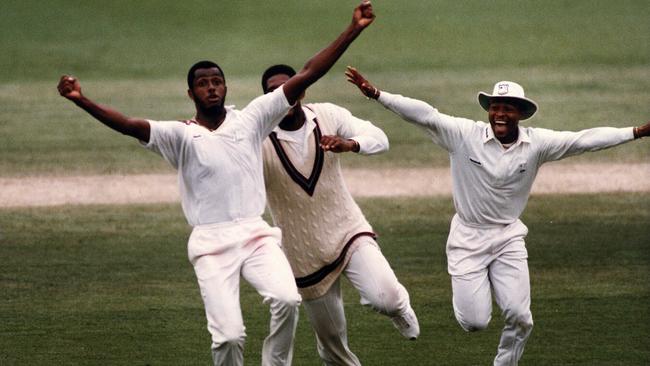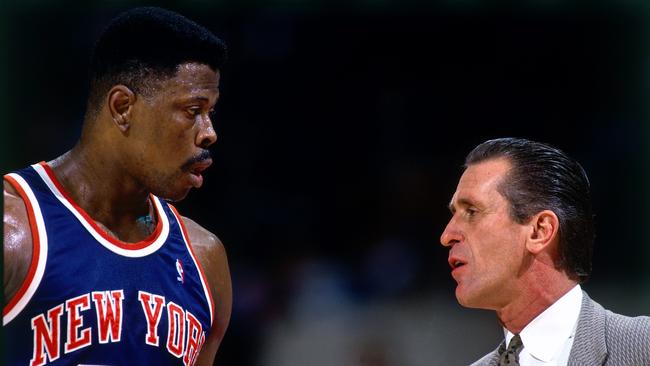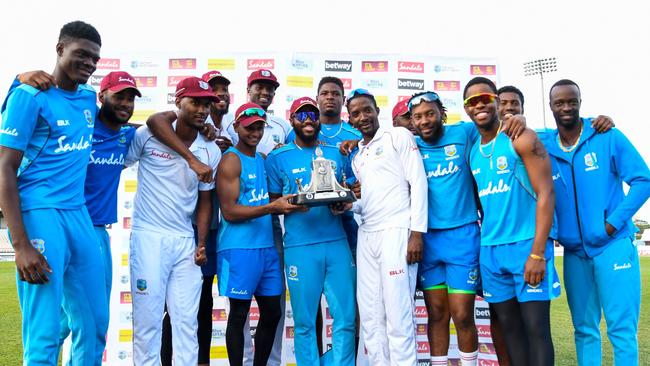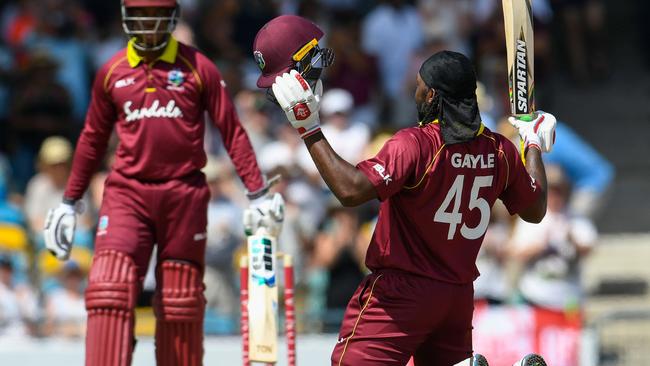Debunking the great myth that West Indian cricket was cut down by an influx of American sport
West Indian cricket has been on a wild rollercoaster, experiencing dizzy highs and extreme lows on the world stage. But one widely accepted reason behind their collapse has been emphatically shut down.

Cricket
Don't miss out on the headlines from Cricket. Followed categories will be added to My News.
From the great heights of the 70s and 80s, to relative embarrassment since the turn of the century, West Indian cricket has been on a wild rollercoaster in the past 40 years.
Everyone in the cricket world has a theory on why after two decades of unprecedented success the West Indies suddenly fell off a cliff.
For starters, the retirement of generational talents was compounded by lacklustre administration, and the ascension of a dominant Australian team from the mid-90s onwards, which led to a rapid decline of the Calypso Kings.

MORE CRICKET NEWS
KNOWLEDGE: Chappelli’s Ashes locks and losers
PONTING: ‘Not many better’ WC threats than Australia
But former West Indian coach Stuart Law wants to set the record on one of the great myths behind the fall of the former powerhouse: that the rise of American sports, particularly the popularity of the NBA, had cannibalised cricket in the island nations.
The proximity to the United States and the global rise of the NBA made the sport instantly accessible to impressionable young minds.
Inspired in the late 1980s and early 1990s by the incredible feats of Michael Jordan, Magic Johnson, Larry Bird and Jamaica’s own Patrick Ewing, young West Indian prospects began packing away their cricket gear in order to start dribbling and dunking.

And suddenly the production line of terrifying, towering fast bowlers that had given us the likes of Joel Garner, Curtly Ambrose and Michael Holding, shut down.
Or so the story goes.
Law, who watched over West Indian cricket for 18 months until he walked away from the head coaching role late last year, isn’t having a bar of it.
“I’ve heard numerous people say that the influx of American sports is taking Caribbean athletes away from cricket,” Law told The Daily Telegraph.
“I can tell you right now that cricket is still the number one sport in the Caribbean.
“It is still the most widely supported, commented on, it’s in every newspaper, on every news report.
“Cricket is the number one sport.”

Money has been the other major suggested driving force behind the decline in West Indian cricket.
And that one has more merit, with the likes of Chris Gayle and Kieron Pollard spurning Test cricket to making bucketloads of cash following Twenty20 competitions around the world.
But Law says the attitude has changed, in large part thanks to the leadership of skipper Jason Holder.
“Their number one focus is Test cricket. And if anything else comes along it’s a bonus,” Law explains.

“(In recent years) the young guys look at Chris Gayle and Chris goes around and plays T20 tournaments around the world, but I think everyone forgets that before he played in any of these T20 tournaments Chris Gayle played 100 Test matches.
“And that is the reason why instead of going to these tournaments and getting paid $US40,000 he gets $2 million.”
LISTEN! The Melbourne Renegades are Big Bash champions - and we have the Telegraph’s Joe Barton and Supercoach Tom Sangster joining host Andrew Menczel to break down one of the all-time chokes as well as the rest of the major cricket headlines of the week.
Far from being concerned about Gayle’s prolific T20 earnings drawing young stars away from West Indian cricket, Law believes he sets the example of an ideal way to service all parts of your career.
Which is, essentially, to put yourself in the shop window by lifting the West Indies back to the top of the world — and cash in once the lucrative T20 leagues take notice.
“To play 100 Tests is no mean feat,” Law adds.
“But to play it with the ability and talent that he had, and success he enjoyed, is testament to him as well. To play 100 Test for your country is something we all strive to do.
“Chris did it and after he did it he was lucky enough to be in that catchment zone of T20 cricket.
“That’s the challenge for guys like Shimron Hetmyer who has come out and said openly that Test cricket is the pinnacle.

“I believe that’s true because I’ve seen him talk about it, I’ve seen him go about his cricket in a way he wants to play it — but Test cricket is still number one.
“Everyone in that dressing room wants to be a success at Test cricket, which is great for the West Indies.
“They understand the shop window is international cricket so if they play really well for the West Indies whether it be Test match, one-day or T20 then they’ve got a chance of getting picked up in these T20 tournaments.”
Originally published as Debunking the great myth that West Indian cricket was cut down by an influx of American sport


